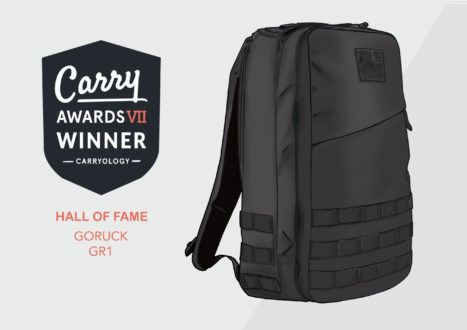
goruck gr1
-

A Beginner’s Guide to Tactical EDC Backpacks and MOLLE
What makes a Tactical EDC Backpack…”Tactical”? You’ve heard the term before; tactical backpack. It’s hard to... Read more
-

CARRY COLLAB XV
GORUCK X Carryology | From GR1 To Guerrilla X
It’s Sunday, June 15th, 2008. Austin, Texas. I’m sitting in the hotel bar at the Holiday... Read more
-

Carry Awards VII: Giveaway of Champions!
Our Seventh Annual Carry Awards are all done and dusted for another year, with over a... Read more
-

CARRY AWARDS 7
Hall of Fame | Carry Awards VII
Our Seventh Annual Carry Awards welcomes an iconic backpack into the Hall of Fame… GORUCK GR1... Read more
-


The Most Popular Bags and Backpacks of 2018
With a new year upon us, we’re eagerly anticipating the carry gear on the horizon. But... Read more
-


The Best ‘Back to School’ Backpacks for Everyday Carry 2018
When it’s time to get back to school, a good backpack is an important addition to... Read more
-

Alternatives: Packs like the GORUCK GR1?
The GORUCK GR1 is without doubt one of the most frequently talked about packs in the... Read more
-


YOMP NOTES: GORUCK GR1 Rucksack EDC
Blacksmithing, snowboarding, mountain biking, digital design, trekking and gear. Neil Stevens is a man with diverse... Read more
-


The Best Backpacks for Everyday Carry
Choosing an EDC backpack deserves careful consideration. After all, it’s going to be your daily companion... Read more
-

Bo’s Favorite Bags
For a bag to make it onto your favorites list, it needs to be pretty special.... Read more
-

Tim Feriss’s ‘Tools of Titans’ Giveaway
We’re massive fans of Tim Ferriss. The lifehacker, global citizen, and one-bag travel guru has inspired... Read more
-

Week In Review ~ 6 December
A wallet that’s also a portable charger, new releases to tempt leather enthusiasts, plus a versatile... Read more
-


Buyer’s Guide :: Best All-Rounder Backpacks
The world of carry is built on the foundation of reality – fabrics, threads, buckles, straps,... Read more





 Carry Awards
Carry Awards Insights
Insights Liking
Liking Projects
Projects Interviews
Interviews

